The 7 Best New Wellness Hotels in the World
The 2023 It List.
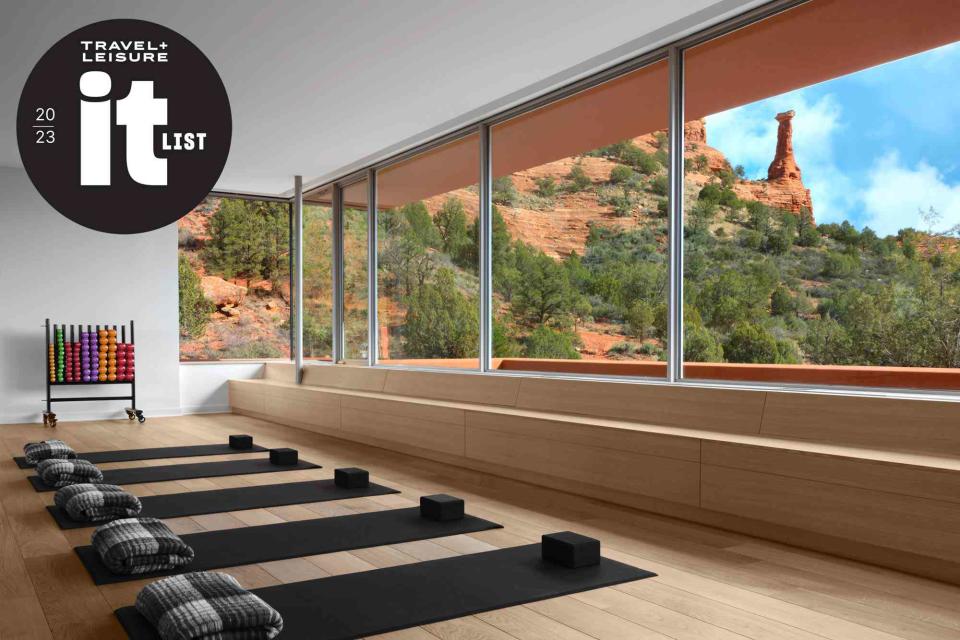
Courtesy of Mii Amo
Everyone needs a reset now and then. We scouted the seven best new wellness retreats around the world, from a long-awaited Arizona icon that’s finally reopened, to a traditional ryokan in Japan that puts nature front and center.
Sensei Porcupine Creek — Rancho Mirage, California
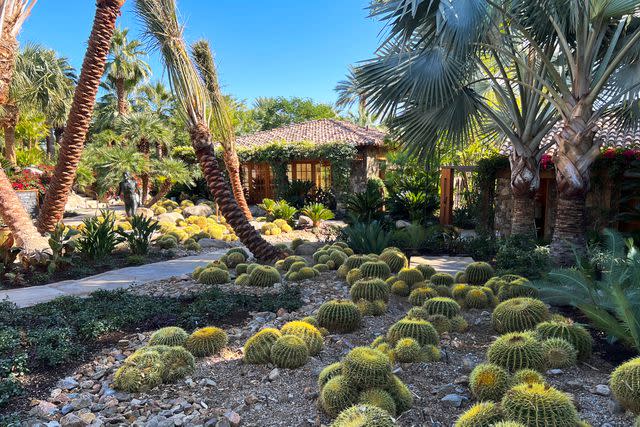
Nina Ruggiero
Set on a 230-acre desert oasis with the bighorn sheep–dotted Santa Rosa Mountains as its backdrop, Sensei Porcupine Creek is not just another California wellness resort — it’s a data-driven experience where medical experts get to know each individual and craft custom programs based on needs and goals. But it’s not all blood tests, mindset analyses, and fitness assessments, either — guests can relax by the pool, take a scenic hike, stretch out at wall yoga, or get a spa treatment in between breakfast, lunch, and dinner from the on-site Nobu restaurant and sushi bar. Oracle founder and billionaire Larry Ellison opened the resort (his second with oncologist and scientist Dr. David Agus) on the site of his former Rancho Mirage estate. The 18-hole golf course — with holes modeled after some of Ellison’s favorite courses around the world — is the centerpiece. Previously, the course was available only to decorated professional athletes and world dignitaries, including President Barack Obama. But now, all golfers have to do is book one of the property’s 22 serene rooms, casitas, or villas to get access. Porcupine Creek is also serious about tennis: courts, identical to those used for the nearby BNP Paribas Open (also owned by Ellison), are helmed by former professionals ready to give lessons at any level. sensei.com; doubles from $1,475. —Nina Ruggiero
Mii Amo — Sedona, Arizona
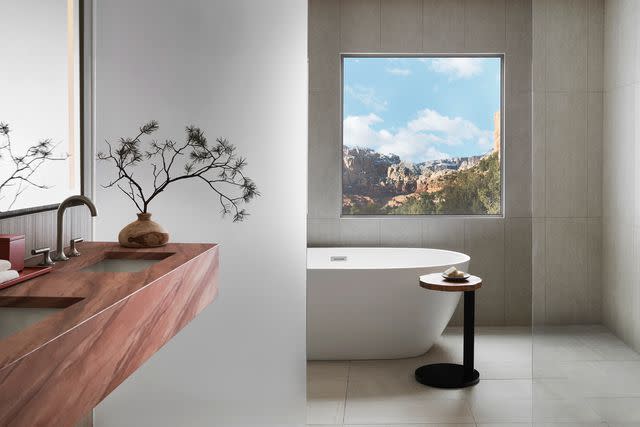
Douglas Friedman/Courtesy of Mii Amo
Between sweeping red rock formations and dusty canyon trails scattered with gnarly junipers and prickly pears, it’s hard to think that any visitor to Sedona would want to be anywhere but outdoors. But if there were an exception, it would be the newly renovated Mii Amo. Architects Gluckman Tang (known for their work on cultural institutions like the Prado Museum in Madrid and the Whitney Museum of American Art in New York City) designed each of the spaces to heighten the awareness of nature, encouraging exploration both outwards and inwards. That means during a yoga class, you can capture a mirrored reflection of canyons or get a framed view of a manzanita tree from a casita courtyard. Simple and natural materials were employed throughout (river stone and concrete floors; coffered wood ceilings; wool- and goat-hair- rugs), and an expanded spa hosts extended-length programming, from ancestral stone massages to sound bath healings and labyrinth walk meditations. And because the basis of wellness is food, chef Seamus Mullen helped create a delectable culinary program at the signature restaurant, Hummingbird, which turns away from calorie counts, focusing instead on natural flavors and fresh ingredients. miiamo.com; doubles from $6,200 for three nights, all-inclusive. —Lisa Cheng
Lanserhof Sylt — Germany
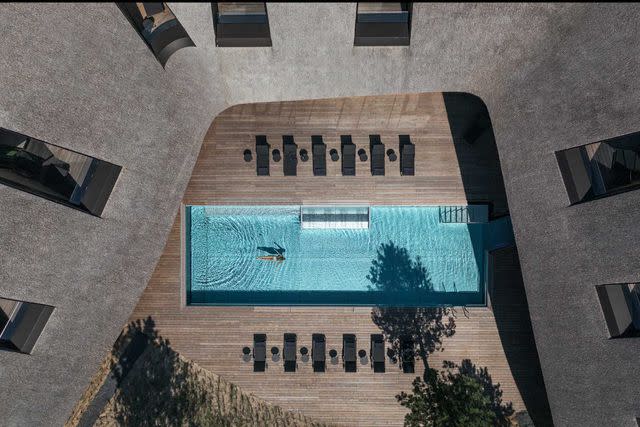
Alexander Haiden Photography/Courtesy of Lanserhof Sylt
Along the sandy bluffs of the tiny German island of Sylt is the newest property from the wellness-focused Lanserhof Resorts group: a sprawling, design-led medical spa that specializes in improving gut health. This is the third property from Lanserhof, which also has outposts in Lans, Austria, and Tegernsee, Germany (about a 50 minute drive south of Munich). This one, situated along the Frisian archipelago near Denmark, takes full advantage of the island’s clean air and tranquil, rural coastal atmosphere. The interiors compliment the wild, windswept nature found outdoors — along with views of the pristine dunes and shoreline, there are dramatic flourishes like the five-story spiral stairwell that reminded me of the Guggenheim Museum in New York City. As expected, the wellness facilities are excellent across the board — the spa contains three saunas, a steam room, and an indoor-outdoor saltwater swimming pool. And while lounging amidst the serene surroundings is encouraged, Lanserhof is best suited for the goal-oriented. The protocol here requires a seven-day minimum stay, with itineraries that include special diets, treatments, and examinations. Fair warning: nutrition is especially regimented, and most meal plans greatly reduce caloric intake in order to fix digestive issues. But the results — combined with Lanserhof’s expert techniques and protocols — were amazing, quick, and highly effective. I left feeling full of energy and better than ever. And I can’t wait to come back. lanserhof.com; seven-day programs from $3,970. —Olivia Lopez
Six Senses Vana, Dehradun, India
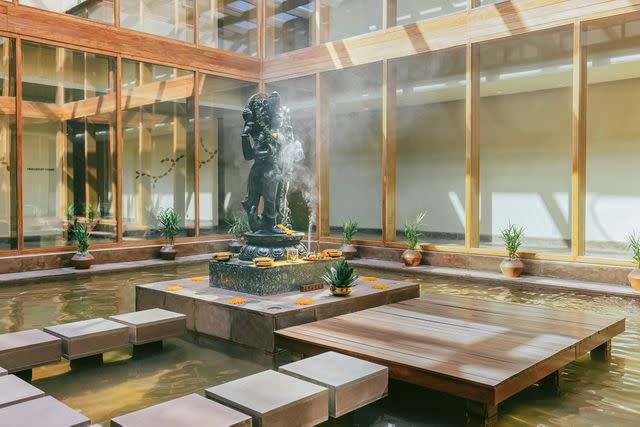
Courtesy of Six Senses Hotels Resorts Spas
At first glance, you could mistake the Six Senses’ second Indian outpost for an ashram where everyone wears white and speaks in hushed tones. What you’re witnessing instead is a wellness retreat that takes its mission seriously. So seriously, in fact, that attention to detail includes everything from food specific to your physiology (which is surprisingly delicious) to the attire you wear for treatments. On arrival, you start with a consultation where the traditional Ayurvedic system of diagnosis (by checking one’s pulse) is combined with a digital body scan that provides actionable data. You’ll follow a regime of treatments – massages, acupuncture, naturopathy, foot reflexology – based on your wellness goals, along with activities such as yoga, music, meditation sessions, and walks in the Himalayan foothills that adjoin the property. On a good day you might catch glimpses of the snow-covered peaks from which the river Ganga originates. sixsenses.com; doubles from $1,000. —Prasad Ramamurthy
Hoshino Resorts Kai Yufuin — Kyushu, Japan
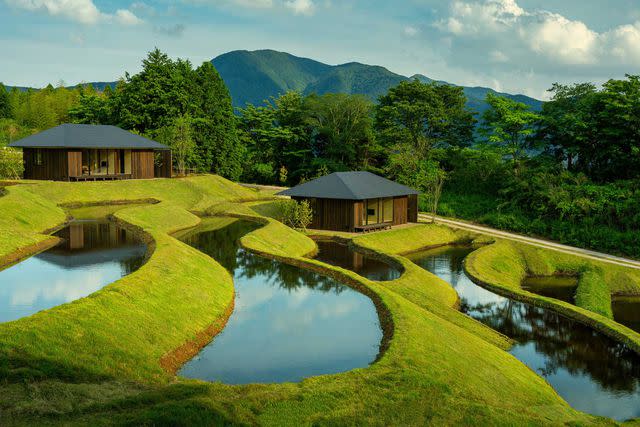
Courtesy of Hoshino Resorts
The serenity of nature is the star of the show at Hoshino Resorts Kai Yufuin, a new hotel set amidst tiered rice fields, and whose architectural theme channels a contemporary riff on the traditional ryokan. Time seems to slow down at this 45-room minimalist property on Japan’s southernmost island, Kyushu. Architect Kengo Kuma created an aesthetic that leans on natural elements — textured black gravel floors, butterfly-like washi pendant lights, grass-woven seating. Dinner is a modern kaiseki medley of local flavors, like wild boar and shiitake pate in a monaka wafer, with watercress salad and citrus kabosu dressing. The best way to soak up the landscape is in the restorative, steaming waters of the outdoor onsen, where every sunlight angle falling across the rice fields and the surrounding mountains can be appreciated. hoshinoresorts.com; doubles from $325. —Danielle Demetriou
Stanly Ranch, Auberge Resorts Collection — Napa Valley
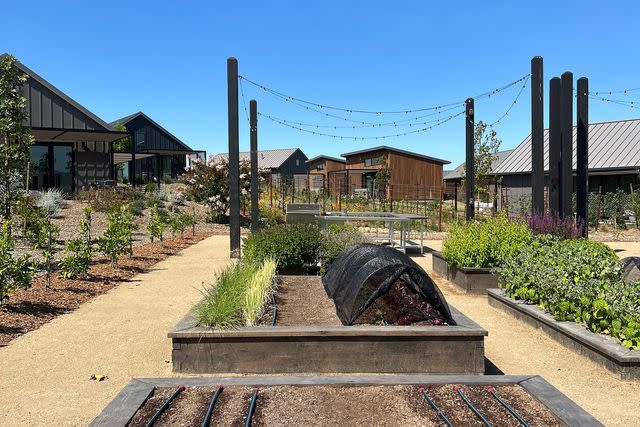
Maya Kachroo-Levine
In 1986, Auberge du Soleil, then a restaurant in Napa Valley, did something groundbreaking: they decided to offer rooms where guests who had spent the day wine tasting could stay overnight. Thirty-seven years later, Auberge (which grew from that small 50-room inn and restaurant into Auberge Resorts Collection, managing 26 hotels across five countries) still sets the luxury bar in Napa. Last year, Auberge Resorts Collection opened Stanly Ranch, its third Napa Valley outpost. With 135 rooms and cottages — each decorated with light wood paneling, beige stonework, and wicker furniture juxtaposed against black metal pergolas — the California farmhouse-chic vibes are, as they say, chef’s kiss. In the middle of the property are pavilions housing the main restaurant, Bear (speaking of things that are chef’s kiss!), coffee shop Gavel, and aptly named grab-and-go lunch spot The Window. Walk down from Bear’s mountain-facing patio to the inviting central pool (one of two at Stanly), encircled by lavender shrubs, next to the alfresco Basin Bar. The final charm of Stanly Ranch, beyond the luscious spa and “Infinity” art installation atop a small vine-strewn hill, is that it actually lives up to its name: it’s legitimately set on a working ranch. In fact, the chardonnay and pinot noir grapes grown on-site have been bought up by nearby wineries since long before the hotel opened, and Auberge eventually plans to make its own Stanly Ranch–labeled wine. aubergeresorts.com; doubles from $1,200. —Maya Kachroo Levine
Buahan, a Banyan Tree Escape — Bali
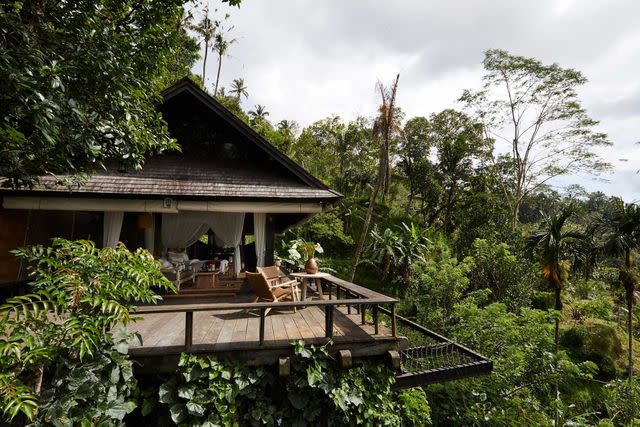
Armelle Habib
Plenty of Balinese hotels promise a one-with-nature experience, but few deliver on that pledge in the way Buahan, on the edge of a jungled valley north of Ubud, does. Each of the 16 stilted villas, built from reclaimed ironwood, have no doors and no walls — only gauzy mosquito nets separate guests from the palm-tufted mountain slopes beyond. Modeled after traditional Balinese balé dwellings, the villas also come with private pools and hammered copper bathtubs, and feature ornate wooden decor carved by local woodworkers. The food and wellness programs are just as rootsy: the Toja Spa, spread over a collection of bamboo pavilions at the bottom of the valley, offers shamanic healing rituals and body wraps with medicinal herbs grown around the property. And from the open kitchen, chef Eka Sunarya draws on native Balinese ingredients, such as moringa and wild mushrooms, for (mostly) plant-based riffs on Indonesian soups, satays, and rice dishes. escape.banyantree.com; villas from $1,345. —Chris Schalkx
For more Travel & Leisure news, make sure to sign up for our newsletter!
Read the original article on Travel & Leisure.


